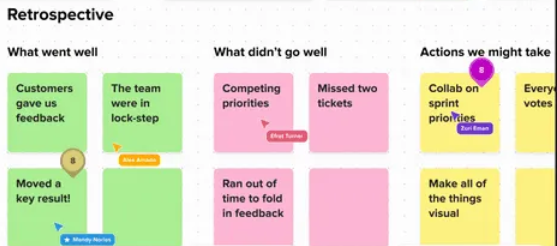Global Digital Transformation
The Challenge
Despite the reputation and leadership, a Fortune 50 insurance company struggled to leverage agile methods effectively, bogged down by inefficient processes, and facing a lack of alignment within our teams. The claims department was looking for an opportunity to reshape their trajectory and foster a culture of agility, collaboration, and efficiency.
The team faced three key issues:
Agile Implementation Woes: The organization has faced challenges in adopting agile methodologies. Teams are struggling to embrace the principles of agility, leading to delays, miscommunication, and an overall lack of responsiveness to change.
Inefficient Processes: Our current processes are cumbersome and hinder the rapid development and delivery of products. There is a need to streamline workflows, eliminate bottlenecks, and enhance the overall efficiency of our product development lifecycle.
Team Misalignment: The lack of alignment among teams and stakeholders impedes progress. Effective communication and collaboration are essential to building a cohesive and high-performing team.
My Role
As the Lead Workshop Facilitator and Program Manager, I played a pivotal role in orchestrating and guiding the collaborative processes to facilitate a three-day interactive human-centered design workshop. Our goal was to transform the way the team collaborated and build a product roadmap. The workshop was attended by the Claims CIO and CTO, along with the claims technology executive leadership team. I facilitated effective communication, foster teamwork, and drive the achievement of desired outcomes during meetings, workshops, and strategic sessions. The team struggled with misalignment and lack of overall consensus. I was instrumental in creating an environment that encourages open dialogue, innovative thinking, and consensus-building.
I leveraged design thinking techniques to enable the team identify their weaknesses and areas of improvement and develop a broader vision and roadmap. During the workshop, I also helped to resolve several internal conflicts that were hindering the progress.
After the workshop, I took charge of managing the overall program and analyzed the outputs of the workshop to drive the digital transformation process from start to finish.
The Approach
During a three-day workshop, we adopted design thinking methodologies to address our needs. We began by conducting a SWOT analysis, which evaluated internal strengths and weaknesses along with external opportunities and threats. This helped us gain valuable insights into the current situation and future prospects, enabling us to make informed decisions and plan strategically. The SWOT analysis also helped us define our broader north star vision.
Once we had completed our analysis and visioning, we moved to the ideation phase, brainstorming various solutions and process changes. We prioritized our needs, identified required tasks, and then proceeded to t-shirt sizing. With t-shirt sizing concluded, we created a product roadmap that included dates, effort by teams, and owners.
Throughout the workshop, we employed several methods, including SWOT analysis, Rose thorn bud, Concept poster, and agile methodologies.
The Solution
Organized a workshop to address the challenges encountered during program management and product development. This immersive and collaborative Program Management and Product Roadmap Workshop offered a comprehensive solution that streamlined processes, improved communication, and established a clear and strategic product roadmap in line with the company's objectives, enabling digital transformation.
The Result
As a group, we were able to complete several challenging tasks, including:
Product Roadmap: We developed a detailed product roadmap outlining the strategic direction for the next 12-24 months. This roadmap included the owners, teams, assumptions, risks, and blockers.
T-Shirt Sizing: We used a T-shirt sizing approach to identify the overall effort required for the broader transformation.
Requirements Framework: We established a robust requirements framework to capture and document user stories, features, and acceptance criteria.
Action Items Plan: We developed an action items plan that outlined the steps required to address the identified challenges and achieve the outlined objectives.
Assessment Metrics: We identified key performance indicators (KPIs) and metrics to assess the success of the agile transformation and process optimization efforts. We regularly evaluate and adjust our strategies based on these metrics.
Aside from creating the product roadmap, we also oversaw the entire project to facilitate a digital transformation across the team within a year. This resulted in a 20% reduction in costs, improved processes, and efficiencies, leading to an overall growth of 15%.



